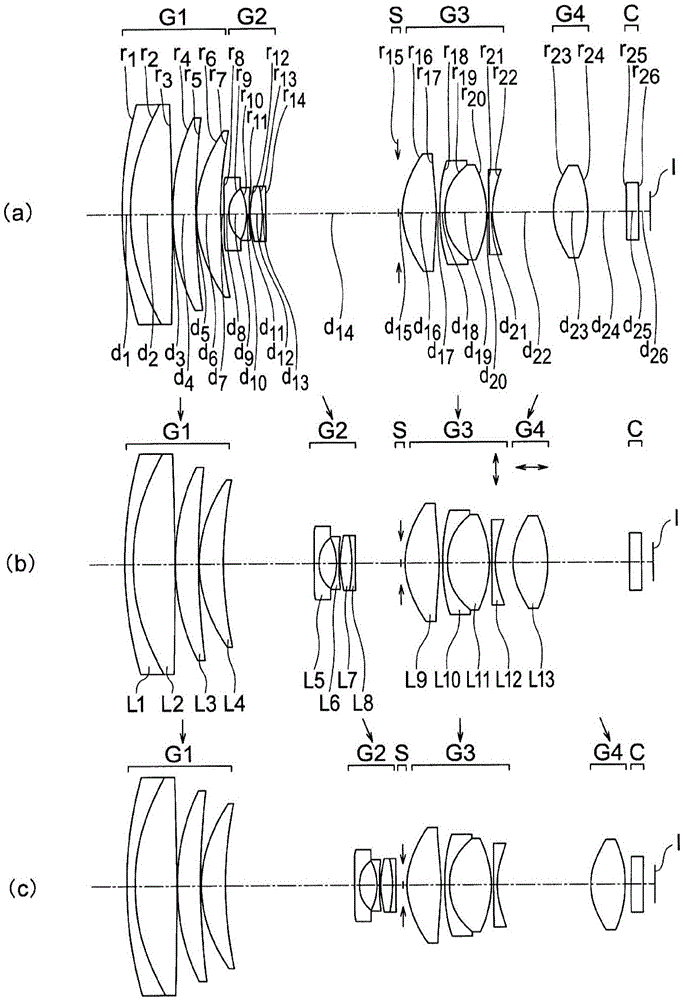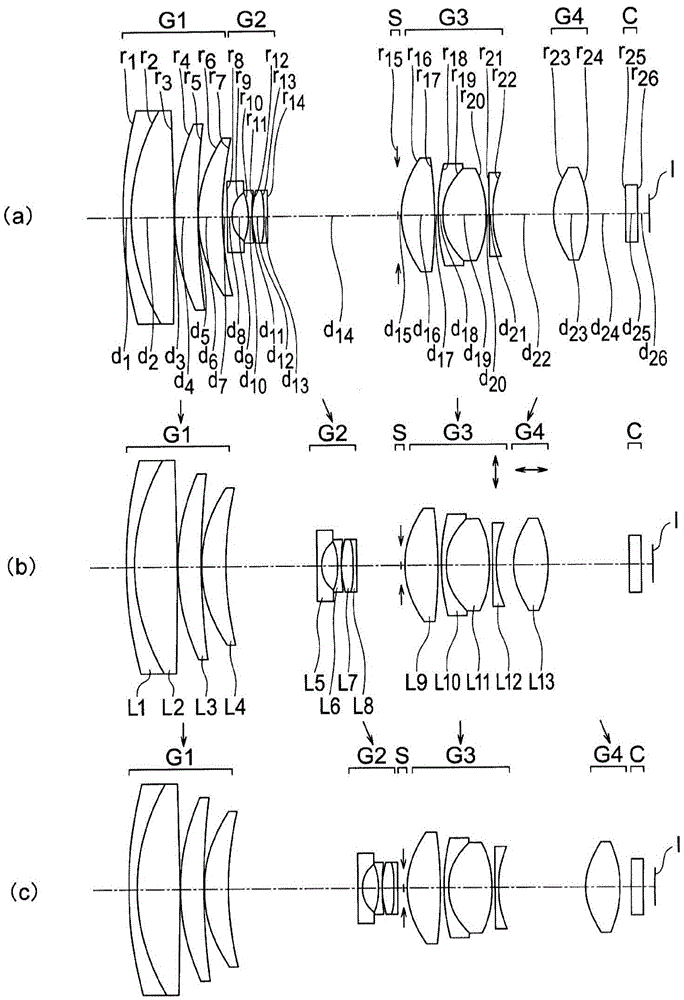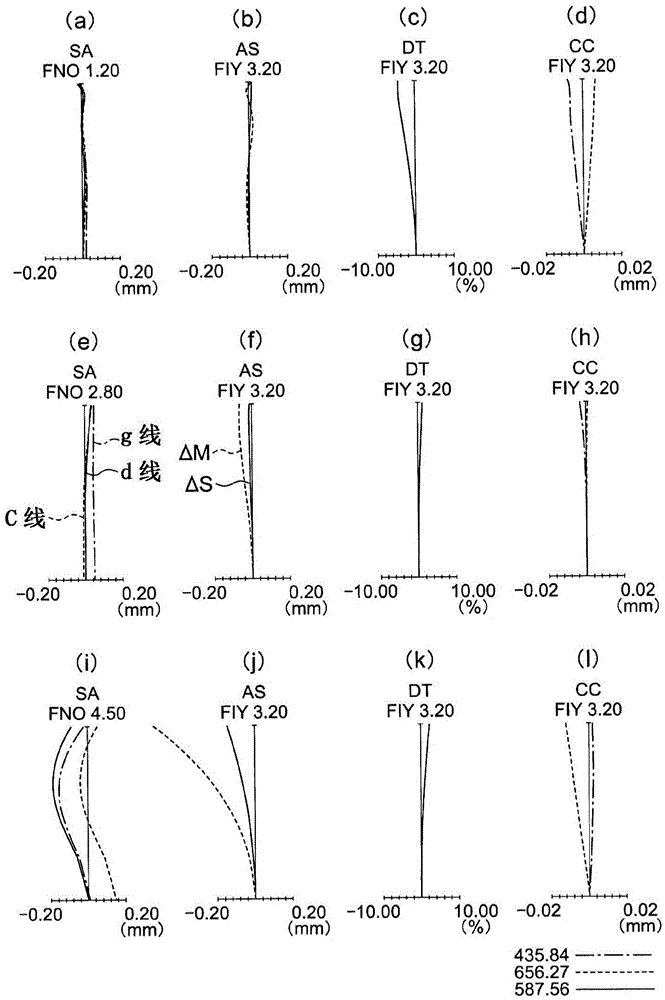Zoom Lens and Image Pickup Apparatus Using the Same
A zoom lens and lens technology, applied in the field of zoom lens, can solve the problems that cannot be said to fully realize the large aperture, and achieve the effect of high resolution
- Summary
- Abstract
- Description
- Claims
- Application Information
AI Technical Summary
Problems solved by technology
Method used
Image
Examples
Embodiment 1
[0155] The zoom lens of Example 1 consists of the first lens group G1 having positive refractive power, the second lens group G2 having positive refractive power, the third lens group G3 having negative refractive power, and the fourth lens group having positive refractive power in order from the object side. G4 composition. The aperture stop (diaphragm) S is arranged between the second lens group G2 and the third lens group G3.
[0156] The first lens group G1 is composed of a negative meniscus lens L1 with a convex surface facing the object side, a biconvex positive lens L2, a positive meniscus lens L3 with a convex surface facing the object side, and a positive meniscus lens L4 with a convex surface facing the object side. Here, the negative meniscus lens L1 and the biconvex positive lens L2 are cemented.
[0157] The second lens group G2 is composed of a biconcave negative lens L5, a biconcave negative lens L6, a biconvex positive lens L7, and a biconcave negative lens L8...
Embodiment 2
[0164] The zoom lens of Example 2 consists of the first lens group G1 having positive refractive power, the second lens group G2 having positive refractive power, the third lens group G3 having negative refractive power, and the fourth lens group having positive refractive power in order from the object side. G4 composition. The aperture stop (diaphragm) S is arranged between the second lens group G2 and the third lens group G3.
[0165] The first lens group G1 is composed of a negative meniscus lens L1 with a convex surface facing the object side, a biconvex positive lens L2, a positive meniscus lens L3 with a convex surface facing the object side, and a positive meniscus lens L4 with a convex surface facing the object side. Here, the negative meniscus lens L1 and the biconvex positive lens L2 are cemented.
[0166] The second lens group G2 is composed of a biconcave negative lens L5, a biconcave negative lens L6, a biconvex positive lens L7, and a plano-concave negative len...
PUM
 Login to View More
Login to View More Abstract
Description
Claims
Application Information
 Login to View More
Login to View More - R&D
- Intellectual Property
- Life Sciences
- Materials
- Tech Scout
- Unparalleled Data Quality
- Higher Quality Content
- 60% Fewer Hallucinations
Browse by: Latest US Patents, China's latest patents, Technical Efficacy Thesaurus, Application Domain, Technology Topic, Popular Technical Reports.
© 2025 PatSnap. All rights reserved.Legal|Privacy policy|Modern Slavery Act Transparency Statement|Sitemap|About US| Contact US: help@patsnap.com



